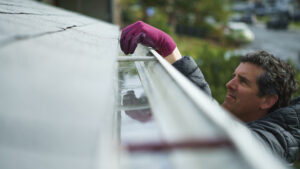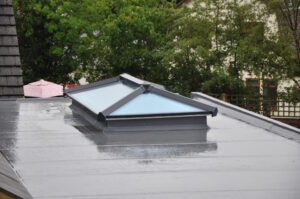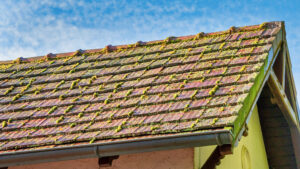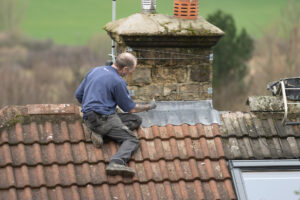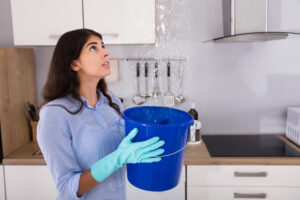A leaky roof may be a nightmare for homeowners. Whether you like it or not, natural phenomena, such as rain, a tornado, thunderstorm, or even a hurricane, can find their way inside your home. Even the smallest hailstones can bring on roof damage and roof leaks. In addition to being a terrible inconvenience, it can seriously harm your house if left untreated. As a result, you must locate the source of the leak and repair it as soon as possible before it causes further damage to your property.
However, you don’t need to worry or become overly anxious because fixing a tiny roof leak can be relatively easy, and you might even be able to do it yourself. Finding the leak is difficult, but the actual repair is often relatively easy. In this article, we’ll talk about a roof leak, the damage it could do, and, most importantly, how to fix a leaky roof. This article will provide you with the skills and resources to repair a leaky roof and prevent further damage to your home, whether you are a DIY enthusiast or would rather pay a professional.
What Are The Reasons For Roof Leaks?
Roof Cracks
Roof cracks are a typical source of leaks. These cracks can arise for a variety of reasons, including age, weather, or faulty installation. Roof cracks can allow water to infiltrate into the structure of the roof, causing water damage and mildew growth. Small cracks can grow into larger ones if left ignored, producing even more serious issues. Regular roof inspections can aid in the early detection of cracks and repair of roof or ceiling leaks.
Improper Slope Of Roof
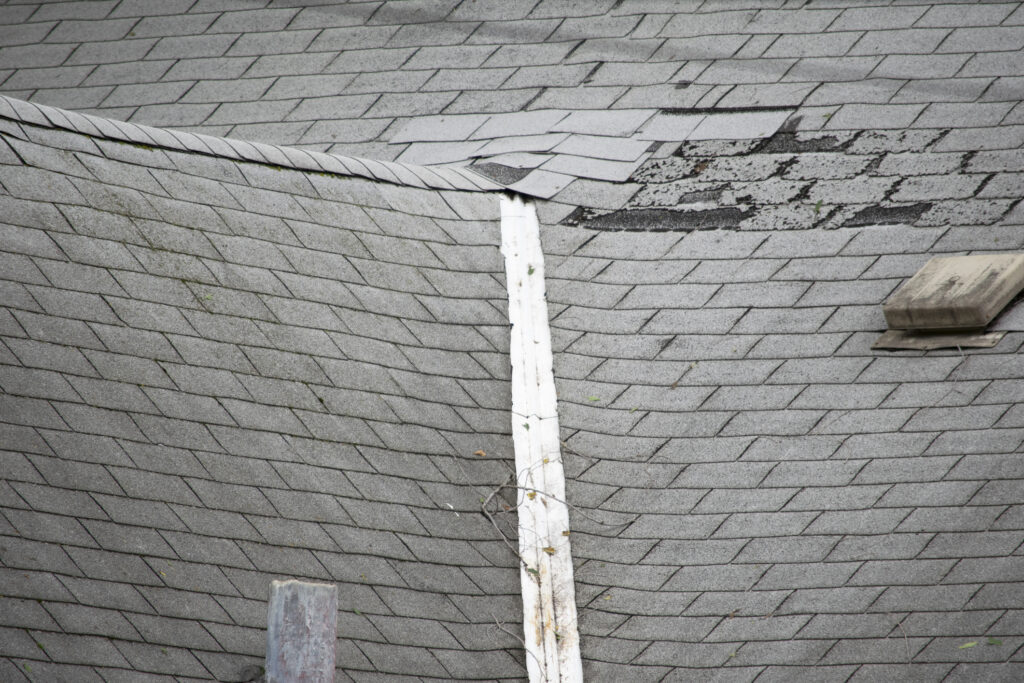
A faulty roof slope may also bring on leaks. The roof’s surface may get ponded with water if the slope is too shallow or flat, resulting in leaks and water damage. This is especially true in places where it rains or snows a lot. Similarly, an excessively steep slope can result in water running down too quickly, overflowing gutters, and water damage. It is essential to check the slope of your roof during installation or repair to avoid leaks.
Poor Maintenance
Roof leaks can cause due to poor maintenance. Regular maintenance is essential to keep a roof in good shape, including gutter cleaning, debris removal, and damage inspection. Regular roof maintenance is necessary to prevent the buildup of water and debris on the roof’s surface, which can harm the structure and result in leaks.
Excess Roof Moisture
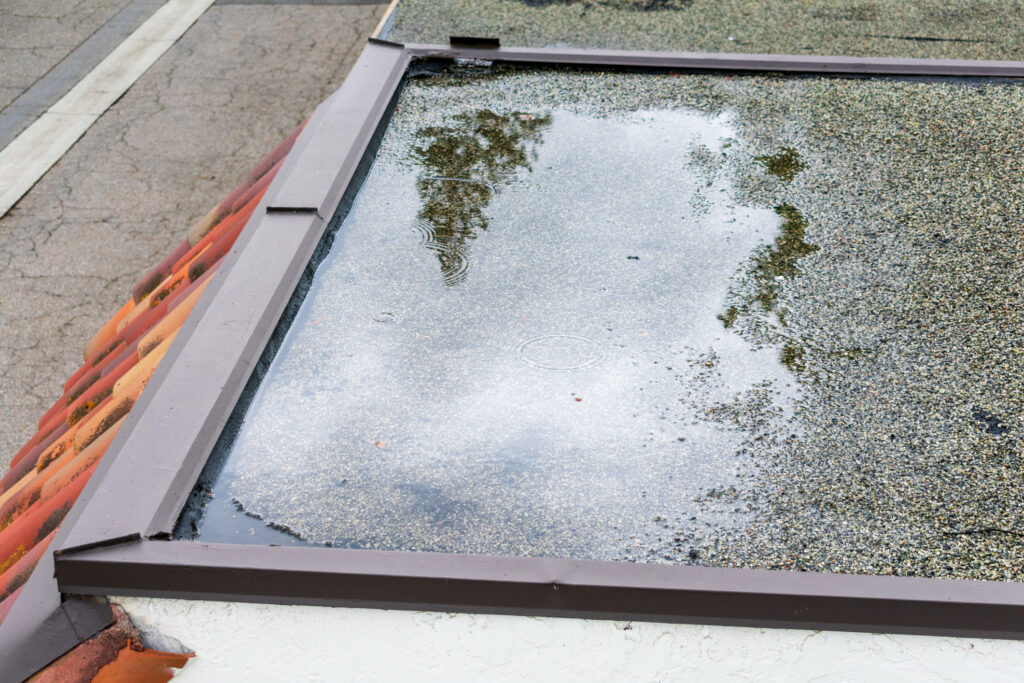
Moisture can accumulate on the surface of a roof due to poor home ventilation, weather conditions, or structural defects. Excess moisture can cause mould to grow, weakening the roof’s structure and causing leaks over time. Furthermore, moisture-induced corrosion and rust on metal roofing components can result in leaks and additional damage. The area may be waterproofed to combat the issue most of the time due to its many benefits.
How to Fix a Leaky Roof?
Different roofs need different repair techniques. Some of the techniques are listed below –
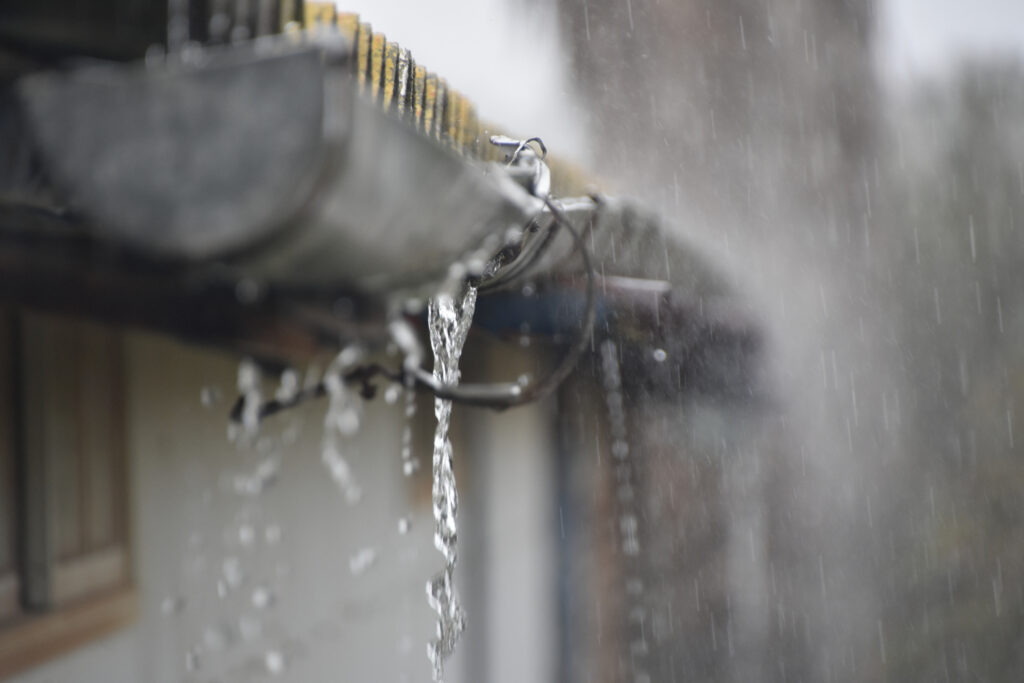
Asphalt Shingles
Asphalt shingle installation or repair is one of the primary approaches to stop roof leaks. This is a common roofing material that is strong and affordable. They are a popular home option because they are simple to install and repair. The following steps will assist in roof repair:
- Check the roof first for significant damage.
- Then, straighten and reattach the uneven shingles.
- Use a roof sealant to patch up any apparent cracks you see.
- Repair any broken or missing shingles.
Roll roofing
Roll roofing is a kind of asphalt-based roofing material similar to asphalt shingles. It is a desirable alternative for low-sloped roofs since it is available in huge, easily placed rolls. Here are some actions to take:
- Look for cracks or blisters on the roof.
- Apply enough roofing cement to the area below the split.
- Replace the roofing substrate if necessary.
- Apply a patch of roll roofing there.
- To create a waterproof patch, add a final layer of roofing cement.
Wood Shakes
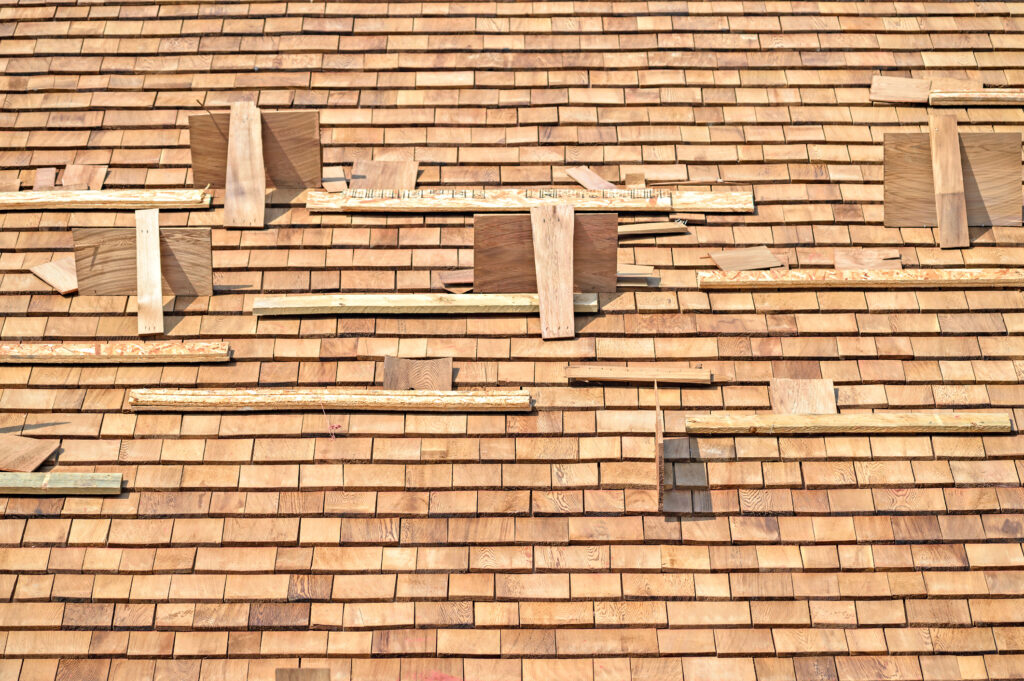
Wood, usually cedar or redwood, is used to make roof shakes. They can give the house a natural, rustic character and are frequently employed on steep-sloped roofs. To fix wood shakes, use these simple instructions:
- Check and examine your roof for any damage.
- Split any cracked shakes with a hammer or chisel.
- Using a hacksaw, remove the nails holding the shattered shake.
- Cut a fresh shake to fit the gap and slide it in.
- Use two galvanized nails to secure the fresh shake.
- Any exposed nail heads must be sealed with roofing cement.
Leaky Joints
Leaky joints can form when different roof parts come together, such as at the chimney or when two parts of the roof meet. To repair leaky joints, perform these steps:
- Examine junctions of surfaces, such as valleys or chimneys.
- Using a putty knife, apply a roof sealant to the area.
- Fix a metal flashing strip over the spot with roofing nails.
- Next, begin sealing the roof leak. Add another layer of roofing cement over the flashing to create a waterproof seal.
Concrete Roofs
Concrete roofs are another form of roofing material that, if not properly maintained, can leak. Reinforced concrete, used to create concrete roofs, is renowned for its strength and longevity. However, they are susceptible to leaks because of several things, including fractures, shoddy installation, and harm from the elements or impacts. To fix concrete roofs, use these simple instructions:
- Examine and determine the leak’s origin.
- Clean up the damaged area and remove any debris or loose concrete.
- Apply a sealant or patching material to the affected area.
- Make sure to allow the patch to dry.
Hire WABO Roofing To Repair Your Leaky Roof In Houston
Don’t freak out if your roof starts to leak! Undoubtedly, a leaky roof is a major annoyance. But if you adhere to the suggestions above, you can regulate the problem. Even if you want to complete the process independently, contacting local professionals is always a good idea before beginning a home makeover. By having a professional assess the damage, you can learn about potential issues you were unaware of when you first noticed your roof was leaking. The quick fixes we’ve described above are perfect for do-it-yourself roofing projects, but they need to be executed with extreme caution. Rushing a roof repair could shorten the life of your roof and harm the structural integrity of your house. So, hire an expert like WABO Roofing to avail seamless roof repair services.

